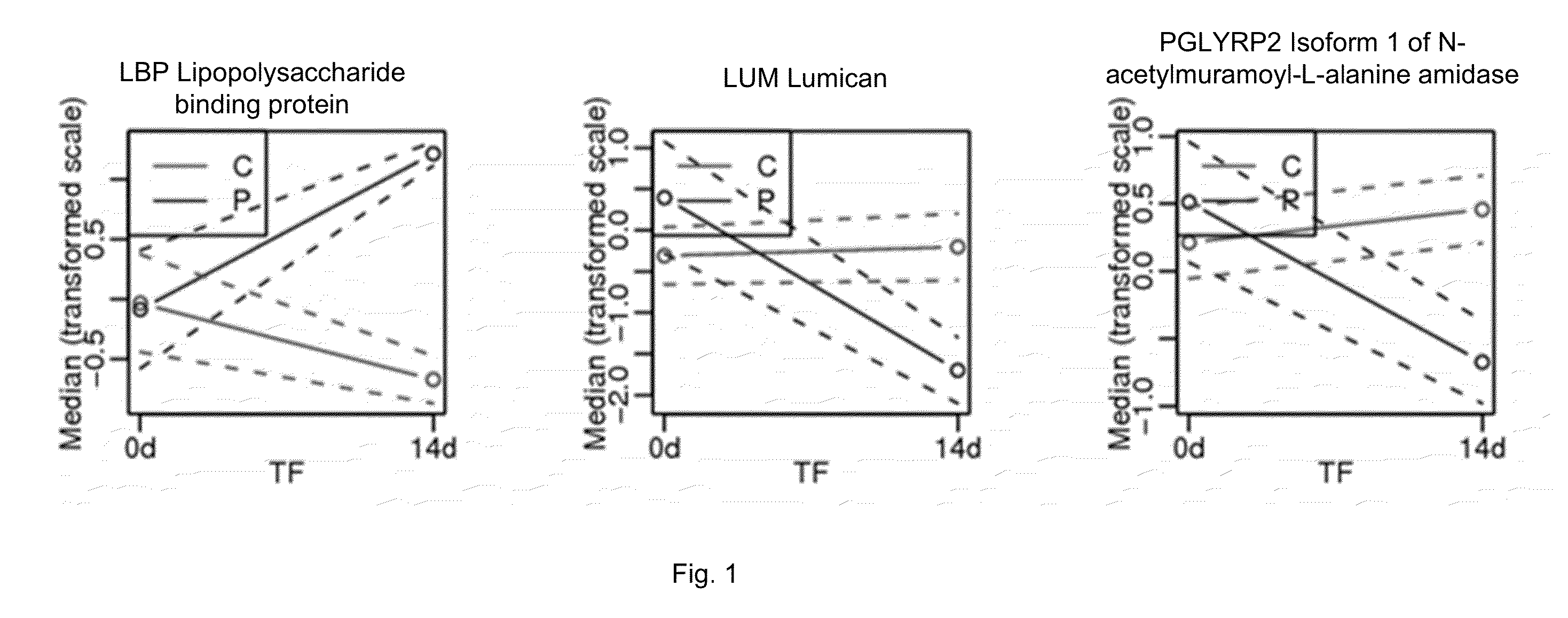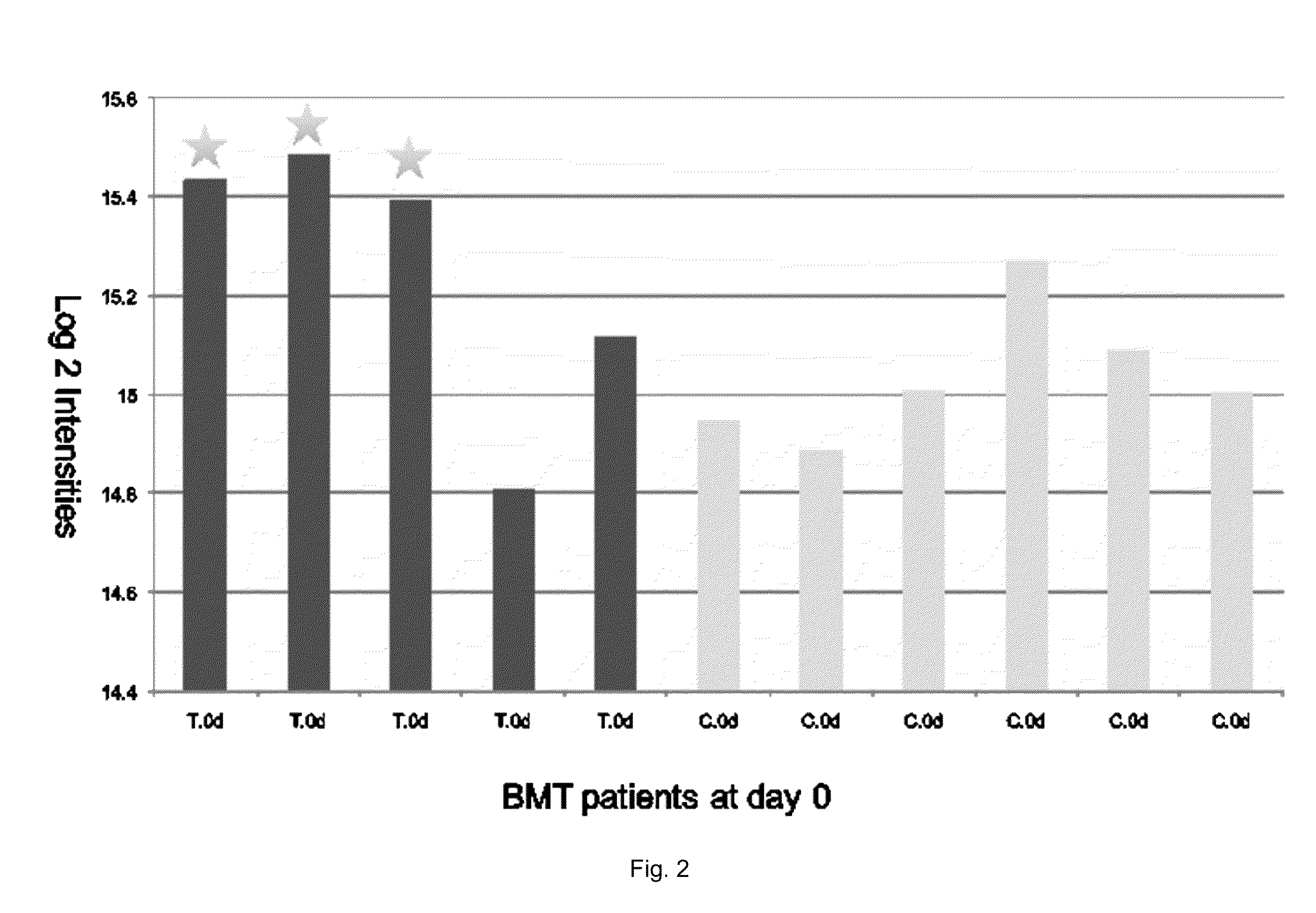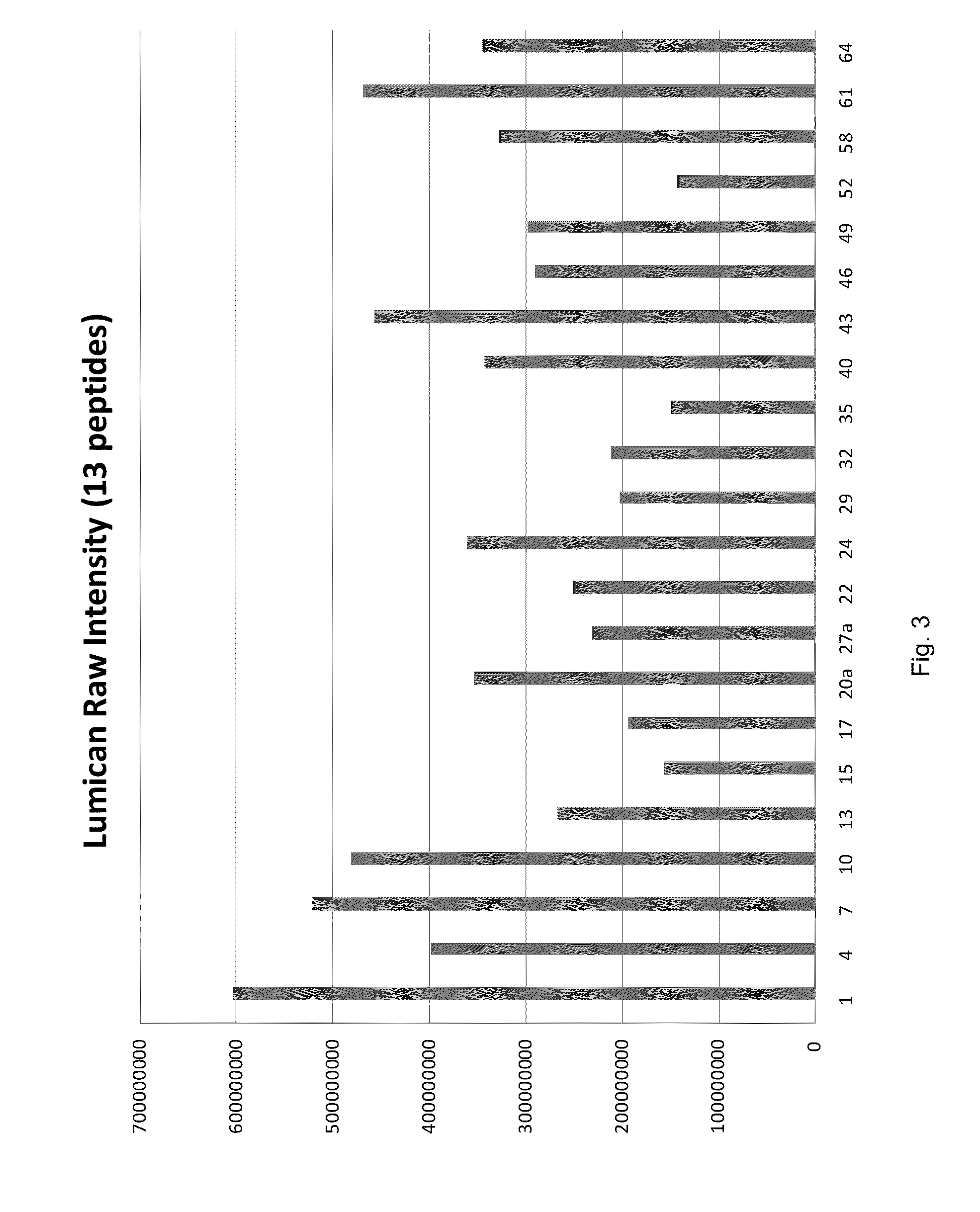Protein biomarkers and therapeutic targets for autoimmune and alloimmune diseases
a technology for autoimmune and alloimmune diseases and proteins, applied in biochemistry apparatus and processes, instruments, library screening, etc., can solve the problems of increasing the number of complications, increasing the risk of pulmonary lung injury, and presenting a significant clinical challenge for non-infectious lung injury, etc., and achieves reliable basis for characterization.
- Summary
- Abstract
- Description
- Claims
- Application Information
AI Technical Summary
Benefits of technology
Problems solved by technology
Method used
Image
Examples
example
[0102]Using label free expression proteomic and bioinformatic analyses, we have discovered and verified novel biomarkers of IPS progression after transplant. In particular, we identified markers that can subtype stem cell transplant patients who: 1) are likely to deveop IPS, and 2) are likely to respond well to etanercept treatment. These markers can be used as prognostic tools to effectively target and trigger therapeutic intervention earlier than currently described. The following outlines the specific markers and assays in human plasma samples to detect these markers by mass spectrometry, ELISA, or related antibody and other methods.
[0103]Plasma EDTA was collected from IPS patients post blood marrow transplant and at the time of IPS diagnosis, while for the control (non-progressors group) samples were post-transplant and 14 days after transplant. Thus, there were two patient types; bone marrow transplant / −IPS and bone marrow transplant / +IPS and two times of collection, post-BMT a...
PUM
 Login to View More
Login to View More Abstract
Description
Claims
Application Information
 Login to View More
Login to View More - R&D
- Intellectual Property
- Life Sciences
- Materials
- Tech Scout
- Unparalleled Data Quality
- Higher Quality Content
- 60% Fewer Hallucinations
Browse by: Latest US Patents, China's latest patents, Technical Efficacy Thesaurus, Application Domain, Technology Topic, Popular Technical Reports.
© 2025 PatSnap. All rights reserved.Legal|Privacy policy|Modern Slavery Act Transparency Statement|Sitemap|About US| Contact US: help@patsnap.com



